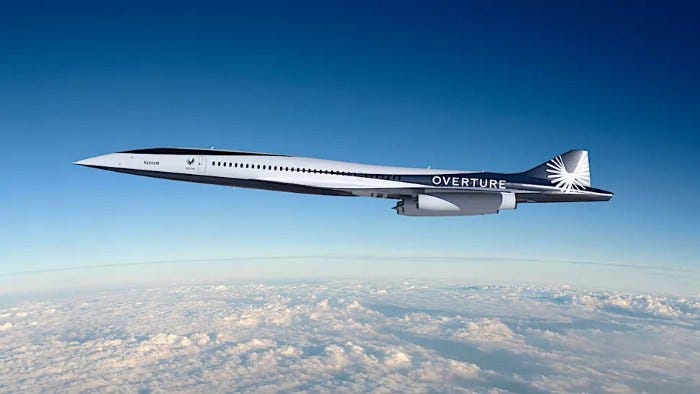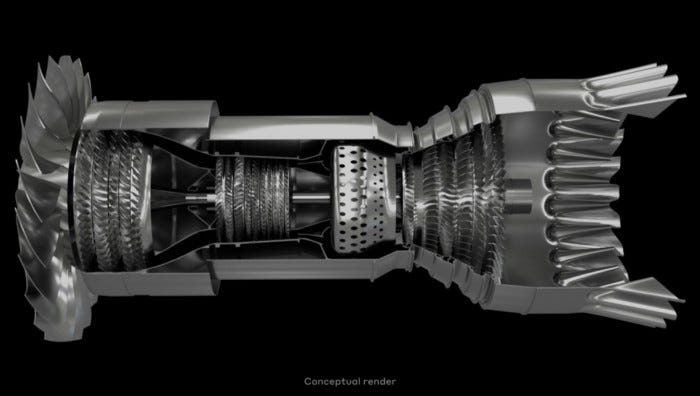Revitalizing Supersonic Travel: Boom Supersonic’s Symphony Engine
Written on
Chapter 1: The Vision for Supersonic Travel
Boom Supersonic is on a mission to reintegrate supersonic travel into everyday aviation, and central to this ambition is the development of a powerful engine. The aviation industry is evolving, necessitating not only speed but also lower noise levels and a shift towards sustainable fuels. This presents a greater challenge for modern supersonic jets compared to the days of the Concorde.
>The Symphony engine, a groundbreaking innovation from Boom Supersonic, is designed to meet these modern requirements. Collaborating with Florida Turbine Technologies (FTT), GE Additive, and StandardAero, this engine represents a significant leap in technology.
Section 1.1: Features of the Symphony Engine
According to Blake Scholl, CEO and founder of Boom Supersonic, the goal is to develop “an economically and environmentally sustainable supersonic airplane.” The Symphony engine aims to achieve this by utilizing 100% sustainable aviation fuel and operating at lower noise levels, thus addressing the industry's evolving constraints.

Section 1.2: A Shift in Partnerships
Initially, Boom Supersonic had partnered with Rolls Royce for engine development. However, after parting ways, they teamed up with FTT to engineer an engine specifically for the Overture aircraft. Additionally, their collaboration with GE Additive allows for the integration of cutting-edge additive manufacturing techniques, enhancing engine capabilities. StandardAero ensures the engine's design focuses on maintainability and reliability.
Chapter 2: The Future of Supersonic Flight
With a thrust of 35,000 pounds, the Symphony engine promises not only power but also efficiency, boasting 25% more time in the air and a 10% reduction in operating costs compared to existing engine designs. Both the Symphony and Overture are set to comply with FAA and EASA certification standards, aiming for a noise level that aligns with modern regulations and a target of net-zero carbon emissions.
The anticipated timeline for the Symphony engine and Overture aircraft is as follows: production is expected to start in 2024, testing in 2026, first flights in 2027, and certification by 2029. If all goes according to plan, the resurgence of supersonic travel could be on the horizon, especially with orders from major airlines like United and American Airlines for over 70 jets. Boom Supersonic is also collaborating with Northrop Grumman to develop a military variant for the U.S. Defense Department.

If successful, Boom Supersonic could usher in a new era where supersonic aircraft become as prevalent as subsonic models.
For more insights on Boom Supersonic’s innovative journey, check out my previous article:
Remember the Concorde? Get Ready for Boom Supersonic!
With Boom Supersonic’s initiative to revive high-speed air travel, we may soon witness a new chapter in aviation history.

Sources
Holt, K, “Boom finds a new design partner for its Symphony supersonic jet engine”, Engadget, 13 Dec 2022
Spry, J, “Boom Supersonic unveils new Symphony engine for faster-than-sound Overture airliner”, SPACE.com, 31 Dec 2022
Coldewey, D, “Boom takes the wraps off its supersonic Symphony engine design”, Tech Crunch, 14 Dec 2022
Saunders, B, “Supersonic Jet Company Boom Unveils Its Next-Generation Symphony Jet Engine”, Hypebeast, 21 Dec 2022
Boom Supersonic, “Symphony”
Young, C, “Symphony: Boom Supersonic announces it will develop its own aircraft engine” Interesting Engineering, 14 Dec 2022